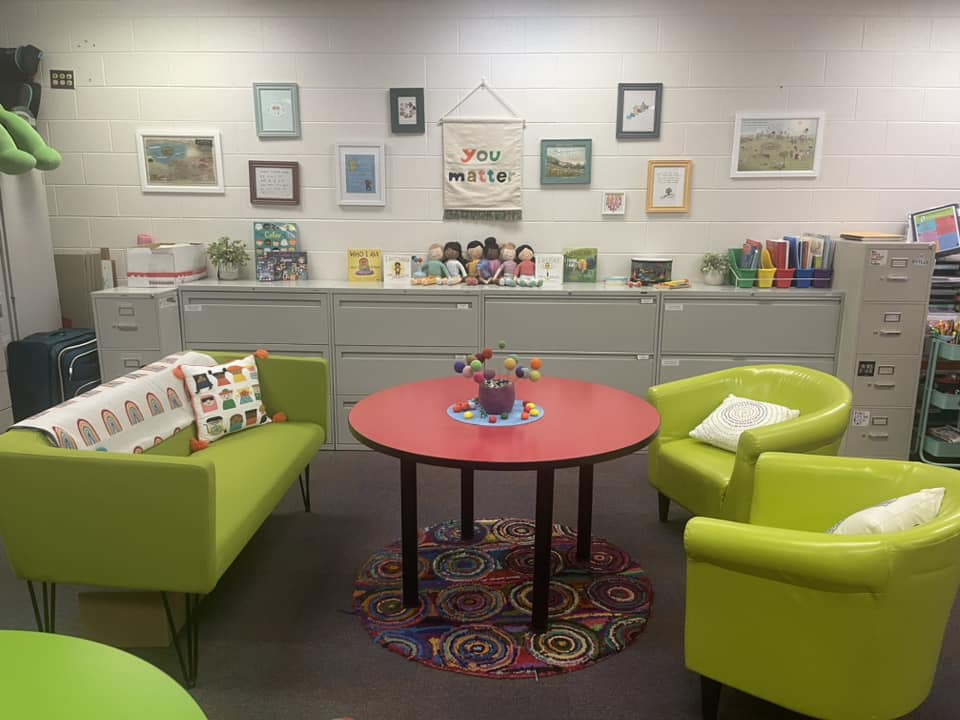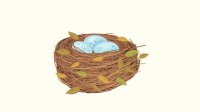A Project to Build a Sense of Safety and Connection
The nest project starts with teachers figuring out what they need to feel secure and bonded with their school community.
Your content has been saved!
Go to My Saved Content.As we start the second half of the school year, or the beginning of one, now more than ever, our connections to one another create cultures of felt safety. Educators need to feel safe and connected in their schools so that those feelings spread to students. Building the nest is an ongoing activity and a neurodiversity-affirming practice administrators can share with all grade levels and adults that cultivates ways we can learn deeply about one another, tapping into our unique humanness.
What’s in Your Nest?
Birds and mammals gather materials with intention and purpose, constructing shelters for their young and themselves. These nests provide safety and connection—two ingredients every living creature needs. What if we borrowed this idea and thought purposefully about the environments we create in our schools? What people, places, conditions, values, and things do you need to feel safe and connected? What resources, relationships, activities, emotions, sensations, colors, foods, or traditions make up your nest?
Just as birds intentionally construct their nests—making and remaking them as needed—we, too, can edit our nests. What is currently working well in our nests? What do we want to add? What do we want to remove? What do I currently have in my nest that is serving me well? What do I want to remove from my nest that no longer serves me?
There are so many ways we can construct our nests individually, as a grade level, department, and school. In this activity, we are first going to create a nest for ourselves. Nests are constructed to meet the needs of the environment and the species. They are durable and hold an entire family. Sometimes our nests become damaged, and we need to rebuild and repair them.
Steadiness, Safety, and Connection
Staff can record what they would like to have in their nests, as well as create a key of the material and resources for how the nest was constructed and what the materials represent.
Nests are symbolic of places that hold us with steadiness, safety, and connection. They are built to be places that are filled with materials that bring ease and comfort in moments of dysregulation and challenge. They are comforting, personal, and unique to each species’ needs. This activity can be shared all year long, as the materials and resources for the nests will wear out, become non-desirable or in need of rebuilding, and as our growth emotionally, socially, and cognitively may require changes as well.
Reflection questions
- What did you learn about yourself as you began constructing your nest?
- What surprised you about building your personal nest?
- What felt uncomfortable or unfamiliar about this activity?
- As a grade level, department, or staff, was it challenging to discover communal materials that serve all adults? These are some examples of collective materials and resources: more time planning, support, a break during the day, a listening ear, less criticism, a more nurturing space, needing to brainstorm challenges, etc.
- What was the most challenging about this activity personally and collectively?
- What was interesting or satisfactory about communal materials that were discussed and shared?
- Can there be a planned and specific time when the nest is explored weekly or monthly?
Below are some guiding questions. As you answer each one, place the resources and materials inside or around as you construct your personal nest. As you begin to add layers of materials or resources that you choose to have inside your nest, there may be materials or resources that you no longer need or desire to be in your nest. Make a list of materials that are worn out, irreparable, or no longer needed.
These questions should help you brainstorm what you want to add, keep, and prune away from your nest.
Guiding questions
- What values feel to be a strong material or resource for you?
- Are there beliefs, feelings, or sensations that you could add or that strengthen the stability of the nest in stormy moments?
- What traditions would you like to add to your nest?
- What languages, symbols, and rituals would fortify your nest?
- Are there practices that have worn away the sides of your nest that you would like to release?
- What places, people, experiences, and celebrations from your community make your nest stronger?
- Think of your senses. What sounds, smells, sights, or textures would feel comforting as you construct your nest?
- What people or things feel steadying for this nest?
Our individual nests create collective nests and hold the emotional temperature of a grade level, department, or school. As a grade level or department, explore your individual nests with one another, and think about the shared materials and resources that would fortify a community nest of connection and safety.
Once you have listed all the desired attributes or resources for this community nest, construct the nest in an area of shared space where students can see and experience the creations of the individual and communal nests of the adults. These nests will represent what the students will model and create in their classrooms.
Application
We can use a variety of materials to construct our nests, such as feathers, beads, construction paper, glue, glitter, pipe cleaners, or any material that represents the resources and materials for the nest. These nests also have a “key” to share what materials represent in the nests.
- Feathers: people
- Colors: traditions
- Beads: specific sensory experiences
- Shredded paper: values or beliefs
Some teachers use the nesting idea to create cozy office spaces for themselves and their colleagues. These spaces allow staff to take a few minutes to recharge during the day.

Student Nests
Once the adults in the building have completed this activity, it can be adapted for students. When we model the building of the nest for students, embracing our strengths, values, and places of safety, as well as the resources that support us, they feel empowered to tap into their growing autonomy with a trusted adult who is joining up with them. Students can then activate their resources in moments of distress or frustration, knowing they have the power and control to construct and design their own nests of felt safety.
